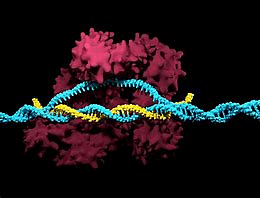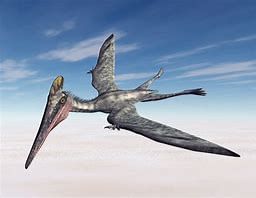UPSC Daily Current Affairs- 13th June 2024 | Current Affairs & Hindu Analysis: Daily, Weekly & Monthly PDF Download
| Table of contents |

|
| High Seas Biodiversity Treaty |

|
| Sticky Inflation |

|
| CRISPR-CAS9 |

|
| LGBTQIA+ IN INDIA |

|
| Pterosaur |

|
| General Anti-Avoidance Rule (GAAR) |

|
| Microalgae |

|
| Nagarahole Tiger Reserve |

|
GS-III/Environment and Ecology
High Seas Biodiversity Treaty
Source: Down to Earth

Why in News?
Grethel Aguilar, the director general of the International Union for Conservation of Nature (IUCN), urged countries worldwide “to strive for a fully functional High Seas Biodiversity Treaty”.
Background:-
- The high seas are those areas of the world’s oceans that are outside national jurisdictions. They constitute a huge chunk of the world’s oceans and are home to a wide variety of biodiversity.
About HIGH SEAS BIODIVERSITY TREATY
- The United Nations agreement on biodiversity beyond national jurisdiction or BBNJ Agreement, also referred to by some stakeholders as the High Seas Treaty or Global Ocean Treaty, is a legally binding instrument for the conservation and sustainable use of marine biological diversity of areas beyond national jurisdiction.
- It is an agreement under the United Nations Convention on the Law of the Sea (UNCLOS). The text was finalised during an intergovernmental conference at the UN on 4 March 2023 and adopted on 19 June 2023
Here are some key points about the treaty:
Protection Beyond Borders
- Countries are responsible for conserving and sustainably using waterways within their jurisdiction.
- The high seas now have enhanced protection against pollution and unsustainable fishing.
Cleaner Oceans
- The treaty aims to enhance resilience and includes provisions based on the polluter-pays principle and dispute mechanisms.
- It addresses toxic chemicals and plastic waste infiltrating coastal ecosystems.
Sustainable Management of Fish Stocks
- Over one-third of global fish stocks are over-exploited, according to the UN.
- The treaty emphasizes capacity building and marine technology transfer.
Legal Framework
- Provides a legal framework to address various stressors on the marine environment in the high seas.
Addressing Planetary Crisis
- The treaty is vital for tackling the triple planetary crisis: climate change, biodiversity loss, and pollution.
- Recognizes traditional knowledge and the polluter-pays principle.
- Covers impacts of human activities, including those beyond national jurisdiction.
Treaty Adoption and Ratification
- Adopted by all 193 United Nations Member States.
- Requires ratification by at least 60 UN member states to enter into force.
- Only seven countries have ratified the treaty so far: Belize, Chile, Mauritius, Federated States of Micronesia, Monaco, Palau, and the Seychelles.
- India has neither signed nor ratified the treaty.
Significance and Achievements
- Greenpeace hailed it as “the biggest conservation victory ever”.
- The treaty enables the creation of marine protected areas in international waters.
GS-III/Economy
Sticky Inflation
Source: Indian Express

Why in News?
RBI in its recent monetary policy review decided to retain the repo rate, for eighth time in a row, due to concerns of sticky inflation.
Background:
- Therepo rate is the interest rate at which the RBI lends money to commercial banks. When RBI wants to incentivise economic activity in the broader economy, it reduces the repo rate, which makes it cheaper for banks to borrow from it and lend onwards to customers. When it wants to disincentivise economic activity, it raises the repo rate, which makes it costly for everyone in the economy to borrow money.
Key Takeaways on Sticky Inflation and RBI's Interest Rate Decisions
Sticky Inflation
- Definition: Sticky inflation occurs when prices do not adjust quickly to changes in supply and demand, leading to persistent inflation.
- Impact: Persistent inflation can occur even if the economy is below its potential level.
- Central Bank Challenge: Central banks find it difficult to control inflation when it is sticky.
- Economic Implications: Persistently high inflation necessitates the RBI to maintain or raise interest rates, potentially harming India's economic growth.
- Tradeoff: There is a constant balance between maintaining price stability (containing inflation) and boosting growth (creating jobs and reducing unemployment).
Why is the RBI Not Cutting Interest Rates?
- Current Inflation Trend: Retail inflation has been approaching the 4% mark, within the RBI's comfort zone of 2%-6% since September 2023.
- Repo Rate Stability: The RBI has not changed the repo rate since February 2023 despite the declining inflation rate.
Four Reasons for Maintaining High Repo Rates
- Gradual Decline in Inflation: Retail inflation has not dropped to 4% since January 2021, and its decline has been gradual. The RBI is concerned about the stickiness of inflation.
- Sustainable Inflation Rate: The RBI needs to be convinced that the inflation rate will remain around 4% sustainably before cutting the repo rate. The predicted fall in inflation is expected to be temporary.
- Strong Economic Growth: India's GDP growth rate has been robust over the past year. The high repo rate is not perceived as a hindrance to economic growth.
- Fiscal Policy Considerations: The forthcoming Union Budget and potential political influences on the fiscal deficit may impact the RBI's decision. A higher fiscal deficit could affect inflation and interest rates.
By maintaining high interest rates, the RBI aims to manage inflation sustainably while considering economic growth and fiscal policies.
GS-III/Science and Technology
CRISPR-CAS9
Source: Science Daily

Why in News?
Researchers recently used CRISPR-Cas9 to alter photosynthesis for the first time.
Background on Gene-Editing and CRISPR-Cas9
Unbiased Gene-Editing Approach
- Innovation: First use of an unbiased gene-editing approach to increase gene expression and improve photosynthetic activity.
CRISPR-Cas9 Overview
- Function: CRISPR-Cas9 is a gene-editing technology that can remove, add, or alter sections of the DNA sequence of a specific gene.
- Origin: Developed from a similar system in bacteria that helps them respond to invading pathogens like viruses.
Components of CRISPR-Cas9
- Cas9 Enzyme:
- Acts as 'molecular scissors' that cut the DNA strands at specific locations in the genome.
- Enables the addition or removal of DNA bits.
- Guide RNA (gRNA):
- Consists of a pre-designed RNA sequence (about 20 bases long) within a longer RNA scaffold.
- The scaffold binds to DNA, and the pre-designed sequence guides Cas9 to the correct part of the genome.
- Designed to locate and bind to a specific DNA sequence.
Mechanism
- Binding and Cutting:
- The guide RNA binds to a specific DNA sequence.
- Cas9 follows the guide RNA to this location and cuts both DNA strands.
- DNA Repair:
- Researchers use the cell’s DNA repair machinery to add, delete, or replace DNA segments with customized sequences.
Potential Applications
- Medical Treatments: CRISPR-Cas9 has potential for treating various genetic conditions, including:
- Cancer
- Hepatitis B
- High cholesterol
GS-II/Polity and Governance
LGBTQIA+ IN INDIA
Source: The Indian Express

Why in News?
The Supreme Court has cautioned judges against using the court-ordered counselling of members of the LGBTQ+ community as a way to turn them against their own identity and sexual orientation. In such cases, they are often in distress or have been separated from their partners by their own relatives, it observed.
Background on LGBTQIA+ Issues and Way Forward
Legal and Judicial Perspective
- Supreme Court Stance: A three-judge Bench, led by Chief Justice of India D.Y. Chandrachud, emphasized the importance of respecting an individual's identity and sexual orientation, stating that attempting to change these through counselling is inappropriate.
Understanding LGBTQIA+
- Acronym Explanation: Represents lesbian, gay, bisexual, transgender, queer, intersex, and asexual individuals.
- Inclusive Term: The “+” includes other identities like non-binary and pansexual, reflecting the evolving understanding of gender and sexual orientation.
Issues and Challenges Faced by LGBTQIA+
- Legal Recognition: Lack of recognition for same-sex relationships and marriage.
- Social Stigma and Discrimination:
- Ostracization from families and workplace discrimination.
- Verbal and physical harassment.
- Resulting mental health issues, such as depression and anxiety.
- Healthcare Access:
- Difficulties accessing sensitive and adequate healthcare services.
- Lack of awareness and training among healthcare providers.
- Educational Challenges:
- Discrimination and bullying in educational institutions.
- Negative impact on academic performance and mental well-being.
- Legal Protection:
- Absence of legal protections against discrimination in employment, housing, and public accommodations.
- Lack of recognition and protections for non-binary and gender non-conforming individuals.
Way Forward
- Inclusive Education: Introduce LGBTQIA+ inclusive education in schools and universities to promote understanding, empathy, and acceptance from a young age.
- Anti-Discrimination Laws: Pass comprehensive laws explicitly protecting individuals based on sexual orientation and gender identity.
- Healthcare Services: Ensure easy access to LGBTQIA+-friendly healthcare services, including mental health support, hormone therapy, and gender-affirming surgeries.
- Economic Empowerment: Encourage entrepreneurship within the LGBTQIA+ community by providing mentorship, funding, and resources for starting businesses and ventures.
- Support Networks: Establish support networks, community centers, and helplines, especially for those facing family rejection or homelessness.
These measures aim to foster a more inclusive and supportive environment for LGBTQIA+ individuals, addressing both their legal and social challenges.
GS-III/Environment and Ecology
Pterosaur
Source: Wionews

Why in News?
Paleontologists recently discovered a new species of pterosaur after analysing 100-million-year-old fossilised bones uncovered in western Queensland, Australia.
About Pterosaurs
Definition and Era
- Pterosaurs: Flying reptiles that lived during the Mesozoic Era, encompassing the Triassic, Jurassic, and Cretaceous periods (about 252 to 66 million years ago).
Classification
- Archosaurs: Pterosaurs are part of the archosaur group, which includes dinosaurs, birds, and crocodiles, although they are not dinosaurs themselves.
- First Flyers: They were the first reptiles and vertebrates capable of flight.
Notable Species
- Quetzalcoatlus: The largest known vertebrate ever to fly, from the late Cretaceous period.
Evolution and Anatomy
- Convergent Evolution: Pterosaurs developed the ability to fly independently from birds and bats, showcasing convergent evolution.
- Wing Structure: Their wings consisted of a sophisticated membrane of skin that stretched from the thorax to a lengthened fourth finger.
- Physical Traits:
- Early species had long, toothed jaws and long tails.
- Later species featured reduced tails and some lacked teeth.
- Many had long necks with throat pouches, similar to those of pelicans, for catching fish.
Extinction and Legacy
- Extinction: Pterosaurs went extinct at the end of the Cretaceous period, around 65.5 million years ago, during the Cretaceous-Tertiary extinction event (K-T extinction event).
- Successors: After their extinction, birds, which are considered descendants of dinosaurs, became the dominant vertebrates in the skies.
GS-III/Economy
General Anti-Avoidance Rule (GAAR)
Source: Business Line

Why in News?
The Telangana High Court has ruled against a taxpayer against whom the revenue department had invoked the General Anti-avoidance Rule (GAAR).
General Anti-Avoidance Rule (GAAR)
Definition and Purpose
- GAAR: An anti-tax avoidance law in India designed to curb tax evasion and prevent tax leaks.
- Implementation Date: Came into effect on April 1, 2017.
- Legal Basis: Provisions fall under the Income Tax Act, 1961.
- Objective: To check aggressive tax planning, targeting transactions or business arrangements aimed at tax avoidance.
Scope and Application
- Revenue Protection: Aims to reduce revenue losses due to aggressive tax avoidance by companies.
- Target: Applies to transactions that are legally valid but result in tax reduction.
- Categories of Tax Reduction:
- Tax Mitigation:
- Defined as taking advantage of fiscal incentives provided by tax legislation.
- Permitted under the Act and acceptable even after GAAR's implementation.
- Tax Evasion:
- Involves illegal actions such as not paying due taxes, wilful suppression of facts, misrepresentation, and fraud.
- Illegal and liable to prosecution; not covered by GAAR as existing laws already address it.
- Tax Avoidance:
- Includes legal actions aimed at reducing tax liability, though considered undesirable and inequitable.
- Specifically targeted by GAAR, focusing on transactions with the sole intention of tax avoidance.
- Tax Mitigation:
Key Features
- Tax Avoidance vs. Tax Evasion: Under GAAR, there is no distinction between tax avoidance and tax evasion. Both can be scrutinized.
- Legal Steps for Tax Reduction: Transactions undertaken solely for tax reduction, which wouldn't have been done otherwise, are covered by GAAR.
- Intended Coverage: GAAR targets tax planning strategies that undermine effective tax collection, ensuring all transactions with tax avoidance implications are examined.
GAAR serves as a comprehensive tool to ensure that all forms of tax reduction through legal yet aggressive planning are scrutinized, thereby strengthening the overall tax system in India.
GS-III/Environment and Ecology
 |
Download the notes
UPSC Daily Current Affairs- 13th June 2024
|
Download as PDF |
Microalgae
Source: The Hindu

Why in News?
CSIR-Indian Institute of Chemical Technology (IICT) scientists have spotlighted the potential of Chlorella Growth Factor (CGF), a protein-rich extract derived from the microalgae ‘Chlorella sorokiniana’, as an ideal ingredient for a wide range of food and feed applications.
About Microalgae
Characteristics
- Microscopic Algal Species: Unlike macroscopic algae, microalgae are microscopic.
- Structure: Mostly unicellular, though some form colonies with larger structures.
- Size: Range from a few micrometers (µm) to a few hundred micrometers.
- Lack of Higher Plant Structures: Do not have roots, stems, or leaves.
- Photosynthetic: Contain photosynthetic pigments enabling them to perform photosynthesis.
- Habitats: Thrive in various aquatic environments, including freshwater, brackish, marine, and hypersaline.
Examples
- Unicellular Algae: Include species such as green algae, diatoms, and dinoflagellates.
Importance
- Ecological Role:
- Primary Producers: Fundamental to ecosystems, supporting food webs and nutrient cycling.
- Oxygen Production: Release oxygen through photosynthesis, contributing significantly to the environment.
- Nutritional Value:
- Rich Resource: Provide lipids, proteins, carbohydrates, and pigments with health benefits.
- Dietary Supplements: Species like Spirulina and Chlorella are consumed for their nutritional value.
- Symbiotic Relationships:
- Coral Symbiosis: Live within coral tissues (zooxanthellae), providing nutrients through photosynthesis.
- Nitrogen Fixation:
- Examples: Species like Nostoc, Anabaena, and Oscillatoria can fix nitrogen.
Microalgae play a crucial role in aquatic ecosystems and have significant ecological, nutritional, and symbiotic importance, making them a valuable resource in both natural and applied sciences.
GS-III/Environment and Ecology
Nagarahole Tiger Reserve
Source: Indian Express

Why in News?
An elephant that was part of the historic Mysuru Dasara celebrations died of electrocution near Karnataka’s Nagarahole Tiger Reserve recently.
About Nagarahole Tiger Reserve:
- Location: It is situated in the districts of Mysore and Kodagu in Karnataka, covering an area of 847.981 sq km.
- The reserve is named after a small river, ‘Nagarahole’ (literally a snake stream in Kannada), which meanders within the habitat before joining the river Kabini.
- It is contiguous with Wayanad Wildlife Sanctuary (Kerala) to its south and Bandipur Tiger Reserve to its southeastern parts.
- The habitat also forms part of the Nilgiri Biosphere Reserve.
- The Kabini and Taraka reservoirs are large water bodies located towards the west and southeastern parts of the reserve, respectively.
- History:
- The origin of the reserve as a protected area dates back to the reign of the Wodeyar dynasty, the former rulers of the Kingdom of Mysore, when Nagarahole was an exclusive hunting reserve of the kings.
- It was set up in 1955 as a wildlife sanctuary by Coorg State.
- It was upgraded to a national park in 1988 and brought under the fold of Project Tiger by declaring it a Tiger Reserve in 1999.
- Vegetation: The predominant vegetation is of southern tropical, moist, mixed deciduous type, with a substantial eastern portion integrating into dry deciduous type.
- Flora:
- The forests are interspersed with swampy fallows called ‘hadlu’, which are dominated by grasses and sedges, favoured by wild herbivores.
- Commercially important rosewood, teak, sandalwood and silver oak are the main trees here.
- Fauna: It supports large assemblages of carnivores and herbivores: Tiger, Leopard, Asiatic wild dog and Sloth bear, Asiatic Elephant, Gaur, Sambar, Chital, Muntjac, Four horned antelope, Wild pig, Mouse deer and South-western langur.
|
39 videos|4562 docs|978 tests
|






















